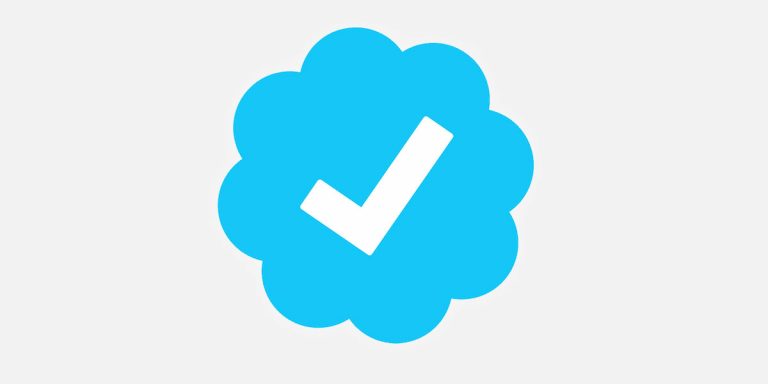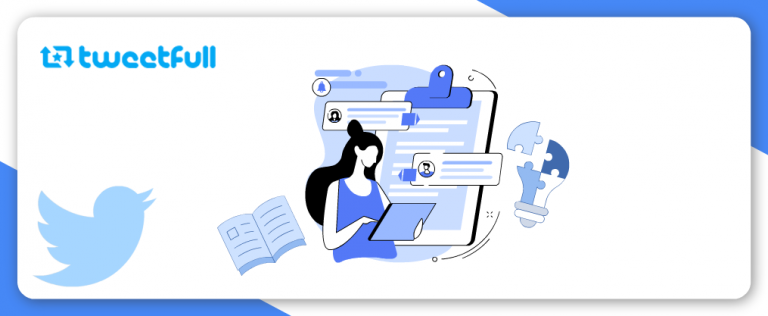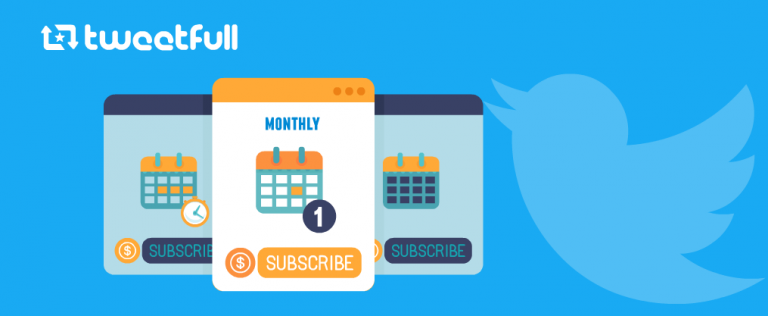What You Need to Know About Twitter Birdwatch
Introduction to Twitter Birdwatch
Twitter Birdwatch, now widely recognized as Community Notes, was introduced as a proactive measure to address the growing challenge of misinformation on the platform. This innovative feature empowers users to collaboratively add context to tweets that may contain misleading or inaccurate information. By leveraging the collective knowledge and vigilance of the community, Community Notes aims to create a more trustworthy environment for all users. The system encourages transparency and open dialogue, allowing the Twitter community to play an active role in maintaining the integrity of conversations and ensuring that relevant information is accessible to everyone on the platform.
Overview of Twitter Birdwatch
Launched as a pilot program in 2021, the Community Notes system was initially available to a select group of users, giving them the ability to add informative notes directly to tweets. These notes, visible to anyone viewing the tweet, were designed to provide additional context, clarify questionable claims, and help users make more informed decisions about the content they encounter. The community notes system is built on the principles of openness and collaboration—every note is publicly visible and can be improved by input from other users. This approach not only helps identify and address misinformation but also fosters a sense of shared responsibility among the Twitter community. By working together, users can ensure that the platform remains a reliable source of relevant content and meaningful conversation.
History of Twitter Birdwatch
The journey of Community Notes began in January 2021, when Twitter launched the feature under its original name, Birdwatch, as a response to the increasing spread of misinformation on social media. Initially rolled out to a small group of contributors, the system quickly gained traction and was gradually expanded to include more users. As the feature evolved, it was rebranded as Community Notes, reflecting its broader mission of community-driven content moderation. Over time, Twitter introduced new features such as auto advanced mode and the video tab, giving users more control over their experience and making it easier to discover and engage with video content. While the community notes system has faced its share of challenges and criticism, it remains a cornerstone of Twitter’s efforts to promote accurate information and empower users to take an active role in shaping the platform. Today, Community Notes continues to evolve, offering users a powerful tool to enhance the quality of conversations and ensure that the platform remains a vibrant, informed community.
How Twitter Birdwatch Works
Twitter Birdwatch, now known as Community Notes, is designed to harness the collective insight of the platform’s users to improve content moderation and provide more context to tweets. When users come across tweets that may contain misleading or false information, they can add a note directly to the tweet through the Community Notes system. This process is straightforward: contributors select the tweet, choose a reason for their note, and provide additional information or credible sources to clarify or correct the content. Once submitted, these notes become visible to the wider community, allowing other users to read the added context before engaging with the tweet.
The strength of Community Notes lies in its collaborative approach. Rather than relying solely on automated systems or internal moderators, Twitter empowers its user base to flag questionable tweets and contribute relevant information. This not only helps to identify and address misinformation more quickly but also fosters a sense of shared responsibility among users. By making these notes public, the platform encourages transparency and open dialogue, helping users make more informed decisions about the tweets they encounter. Ultimately, Community Notes is a key part of Twitter’s ongoing efforts to create a healthier conversation environment and ensure that the platform remains a trusted source of information.
Benefits of Twitter Birdwatch
The introduction of Community Notes brings a host of benefits to both users and the broader Twitter community. One of the most significant advantages is the way it empowers users to take an active role in content moderation. By allowing anyone to flag and annotate tweets that contain questionable claims, Community Notes helps to slow the spread of misinformation and encourages a more thoughtful approach to sharing information.
This system also promotes media literacy by prompting users to critically evaluate the tweets they see and seek out additional context when needed. For social media managers and those invested in maintaining a strong brand identity, Community Notes offers a valuable tool for monitoring and addressing potentially harmful or misleading content. It provides a transparent mechanism for the community to challenge and clarify tweets, supporting Twitter’s commitment to fostering informed public discourse.
Moreover, Community Notes reinforces Twitter’s position as a platform that values accuracy and community-driven solutions. By involving users in the process of content moderation, Twitter not only enhances the quality of information on the platform but also builds trust among its user base. This collaborative approach helps ensure that the platform remains a space where relevant content and meaningful conversations can thrive.
Twitter Birdwatch, Community Notes, and Social Media
Twitter Birdwatch, now seamlessly integrated into the Community Notes system, represents a significant step in the platform’s ongoing efforts to provide users with more control over the information they encounter. Originally launched as a pilot program, Birdwatch empowered everyday users to add context to tweets that might contain misleading or questionable claims. This crowdsourced approach to content moderation has since evolved, making the Community Notes system a central feature for both iOS and Android users, as well as those accessing the platform via desktop.
The Community Notes system is just one of many new features Twitter has introduced to enhance the user experience and help users find relevant content. The addition of the video tab, for example, makes it easier than ever to discover trending video content, and premium subscribers can now upload videos up to 4 hours long and in 4K resolution, surpassing previous limits. The group chat feature allows for more private and focused conversations among users, and in 2024, Twitter increased the group chat limit from 250 to 256 participants to support larger community discussions and marketing efforts. Direct messages have also seen improvements, with options to hide replies and set group chat limits, and enhanced Direct Message security features now include end-to-end encryption and, for iOS users, the ability to edit messages after sending. Twitter rolled out video response capabilities, allowing iOS users to react with video to posts in April 2025. The rollout of audio and video calling features for Android devices expanded functionality previously available on other platforms like iOS, further enhancing communication options.
For those seeking even more advanced capabilities, Twitter Blue offers premium users a suite of exclusive features. Subscribers can edit tweets, upload longer videos, and access the Media Studio for professional-grade video content creation and management. Monetization for creators is increasingly focused on engagement from Premium users rather than solely on ad revenue, and premium subscribers benefit from features such as access to AI-powered tools and priority services. These tools are especially valuable for social media managers and brands looking to boost their campaign performance and maintain a strong brand identity on the platform.
As a hub for social media news, Twitter (now officially rebranded as X) continues to be the go-to platform for breaking stories, with high profile accounts, journalists, and politicians using it to reach wide audiences. The platform’s influence is reflected in the sheer volume of conversations and engagement data generated daily, making it a vital resource for anyone tracking social media updates or monitoring campaign performance. Twitter launched a new analytics tool called Radar for Premium users in 2024 to monitor conversation volume and identify emerging topics, and in 2025, new engagement data was added to the analytics tab, showing interactions from followers and non-followers. The addition of the quote tweets metric as a new feature allows for more precise measurement of quote tweets on posts, further enhancing social media analytics. Learn how to build a loyal audience on Twitter in 2025.
However, with its prominence comes responsibility. The platform has faced ongoing challenges related to hate speech, fake news, and the spread of misinformation. To address these issues, Twitter has implemented machine learning algorithms and updated its content moderation policies, aiming to detect and remove harmful content more efficiently. The Community Notes system further supports these efforts by allowing the community to flag and contextualize questionable claims, helping to provide users with relevant information and reduce the impact of misleading content.
User profiles have also become more customizable, with options to update profile pictures, header images, and personalize the navigation bar and engagement buttons. Privacy and security settings are easily accessible, giving users the ability to manage their data and control their online presence. Verified accounts, marked by the blue tick, help users identify authentic sources, while labels for state-affiliated media accounts provide additional transparency about the origins of certain content.
The platform’s transition to X has brought a wave of new features, such as the ability to downvote tweets, access auto advanced mode, and manage engagement data more effectively. These updates, along with ongoing improvements to the Community Notes system, reflect X’s commitment to providing users with more control and a safer, more informative environment. New features and updates have also enhanced marketing opportunities, including improved ads targeting and content promotion tools, making the platform more attractive for brands and advertisers.
As with any major platform, these changes have sparked mixed reactions among users. While many appreciate the new tools and increased transparency, others have raised concerns about free speech and the potential for over-moderation. Despite these debates, X continues to evolve, introducing new features and refining existing ones to better serve its diverse community.
To stay informed about the latest developments, users are encouraged to explore the platform’s help center, read the official blog for social media updates, and review the developer agreement for insights into building new tools and features. By taking advantage of these resources, users can ensure they are making the most of everything X has to offer, from managing their account and privacy settings to engaging with the latest social media news and trends.
In summary, the integration of Birdwatch into the Community Notes system, along with a host of new features and ongoing improvements, underscores X’s role as a leader in the social media landscape. Whether you’re an android user, iOS user, premium subscriber, or social media manager, staying up-to-date with these changes will help you navigate the platform more effectively and make the most of your online experience.
Premium Users and Twitter Birdwatch
Premium users, including those subscribed to Twitter Blue, enjoy enhanced features that make their experience with Community Notes even more powerful. With Twitter Blue, premium subscribers have more control over how they interact with the community notes system. For example, they can more easily view, filter, and engage with notes on tweets, tailoring their experience to focus on the types of content and context that matter most to them.
In addition to these Community Notes enhancements, premium users benefit from exclusive features such as the ability to edit tweets, upload longer videos, and access reader mode for a streamlined reading experience. These tools not only make it easier for premium users to contribute high-quality notes but also help them stay informed and engaged with the latest conversations on the platform. The added ability to manage and personalize their interaction with Community Notes means that premium subscribers can play a more active role in shaping the quality of information shared on Twitter.
By offering these advanced features, Twitter Blue supports users who want to make the most of the platform’s content moderation tools and contribute meaningfully to the community. Whether you’re a social media manager, content creator, or simply an engaged user, the premium experience provides more control and flexibility, making it easier to access, contribute to, and benefit from the Community Notes system.
Twitter Birdwatch and Engagement Data
The rollout of Community Notes has introduced new dynamics to engagement data on Twitter. By providing users with additional context about tweets, Community Notes can directly influence how people interact with content. For example, when a tweet is flagged with a note indicating it contains misleading information, users may be less likely to like, retweet, or share it, which can reduce its reach and visibility. On the other hand, tweets that are annotated with helpful or clarifying notes may see increased engagement, as users find them more trustworthy and informative.
For social media managers and content creators, understanding how Community Notes affects engagement data is crucial for evaluating campaign performance. The presence of notes can serve as a signal to both users and brands about the credibility of a tweet, impacting everything from conversation volume to the effectiveness of marketing efforts. For example, a campaign tweet that receives positive, informative notes may experience a boost in engagement, while one flagged for questionable claims could see a decline.
By analyzing engagement data in the context of Community Notes, users and brands can gain deeper insights into how their content is perceived and make more informed decisions about their social media strategies. This added layer of transparency helps ensure that the most relevant and accurate content rises to the top, benefiting the entire Twitter community.
Twitter Birdwatch and Hate Speech
Community Notes also plays a vital role in Twitter’s ongoing efforts to address hate speech and promote a safer environment for all users. While the primary focus of Community Notes is to provide context to potentially misleading information, the system can also be leveraged to flag and annotate tweets that contain hate speech or incite violence. By allowing users to add notes that challenge or contextualize harmful content, Community Notes helps to counteract the spread of hate speech and promote more respectful conversations.
This community-driven approach to content moderation relies on the active participation of users, who can highlight problematic tweets and provide counter-narratives or additional information. However, the effectiveness of Community Notes in combating hate speech depends on both the engagement of the community and the robustness of Twitter’s content moderation policies. It’s important to recognize that, like any open system, Community Notes can be misused, potentially silencing marginalized voices or spreading further misinformation.
To address these challenges, Twitter continues to refine the Community Notes system, ensuring it remains a tool for promoting safety, accuracy, and informed dialogue. By empowering users to take part in content moderation and providing transparent mechanisms for addressing hate speech, Community Notes supports Twitter’s mission to create a more inclusive and trustworthy platform for everyone.
Twitter launched Birdwatch as its answer to combat the fake information issue. The initial release of Birdwatch was as a pilot program, aiming to address the spread of fake and misleading information on the platform. Fake and misleading information is at the center stage of all social media related debates. Many have called out social media platforms for turning a blind eye towards fake news in the past.
Recently, all social media platforms are bringing in provisions to reduce fake news circulation. More often, platforms use automated systems with the least manual intervention to filter content. Twitter has also implemented new policies to monitor and regulate new tweets, helping to control content and enforce bans as part of its ongoing improvements. Using appointed curators to review every social media post is impossible after all.
Twitter’s Birdwatch concentrates on using regular Twitter users to tackle fake information. Wikipedia and Google already use the volunteering regular users’ help for reviews. Twitter’s Birdwatch is using a pretty much similar approach. Interestingly, Birdwatch looks to offer more options in curating content.
How Does a Birdwatch Work?
Every tweet will carry an option called “Contribute to Birdwatch” in addition to the regular options like Embed tweet and Report tweet. When a user clicks on “Contribute to Birdwatch”, he will be presented with the regular terms and conditions on the first step. Then he will be given a series of options to choose the reason for adding a note. After picking an option, he can enter a note about the reason he flagged the content. Twitter encourages Birdwatch users to use credible links or supporting evidence to back their claims, and including headlines and link previews as supporting evidence can improve the credibility of notes.
Once a note is added, the note will be available on the separate Birdwatch website of Twitter. After a note is added, any other user who sees the note can rate the note for its credibility. The rating on every note will be made visible to the public. Twitter also uses weightage to the ratings. When another user sees the tweet, he can choose to see the notes regarding the tweet and the supporting ratings. Currently, Twitter does not take any action on the negatively noted tweets as Birdwatch is still in its pilot version. Once Birdwatch goes live for everyone, we can expect Twitter to remove fake or misleading information based on the contributor’s comments.
There are two important actions for any Birdwatch contributor, “Adding a note” and “Reviewing a note”. Post authors have the ability to contribute and moderate notes, and post replies are part of the ongoing discussion. We will discuss how to do these two actions,
Adding a Note to a Tweet
First of all, Twitter has a few ground rules for people to consider eligible to be a Birdwatch contributor. When you initiate your account to be a contributor, the eligibility will be checked. Twitter currently checks for the following in your account,
- Your account needs to have a verified phone number and email id.
- Two-factor security authentication must have been enabled in your account.
- Should not have violated any Twitter rules in the recent past.
From an eligible account, you can click on “Contribute to Birdwatch” (as mentioned earlier in the post). The default reasons given by Twitter will be like “False Information”, “Misleading Information” etc. You will choose one of the apt options and add your note. The added note will be listed on the Birdwatch website of Twitter for rating by others. When you contribute, your image (profile picture) is visible alongside your contributions.
Rating a note
Birdwatch in default displays the notes which need to be rated on top with a tag “Needs more ratings”. Notes which already have enough rating as “helpful” or “Not-helpful” will be displayed below. Users will have three rating options in case if they want to rate a note – “Helpful”, “Not-Helpful” and “Somewhat Helpful”.
Twitter then ranks the ratings. Twitter uses “Helpful scores” to rank the rating. In simple terms, a note rated “Helpful” is considered “1.0 points”, “Somewhat Helpful” is considered as “0.5 points” and “Not-Helpful” as “0” points. If a note was rated 100 times, all 100 ratings will be averaged based on the above point system. For instance, consider a note with a total of 3 ratings, “Helpful”, “Not-Helpful” and “Somewhat Helpful” respectively. Then the “Helpful score” will be “(1+0.5+0)/3” = “0.5”. Based on the “Helpful score”, the post will be rated. Monitoring conversation volume around flagged tweets also helps identify trending misinformation and prioritize which notes need attention.
A few More Things About Birdwatch…
- Birdwatch pilot version is only available in the United States for selected users now. Twitter is expected to tweak a few features of Birdwatch based on feedbacks before launching to the world. Many users have participated in the pilot and provided valuable feedback.
- In May 2025, Twitter’s Community Notes reached 1 million contributors globally and received an algorithm improvement to enhance note quality and relevance.
- In July 2025, Twitter launched its AI Notes Writer, a new tool designed to streamline the creation of Community Notes and assist contributors with drafting accurate and helpful notes.
- Currently, notes and ratings are maintained separately in a Birdwatch website of Twitter. Twitter will be integrating notes and ratings into in-app soon.
- All Birdwatch related contributions and components including the algorithm used will be available for public access.
- You cannot remain anonymous on any note or rating provided by you. Your Twitter profile details, including your image, will be available for other users to see.
- Since Birdwatch’s inception, Twitter has officially changed its branding and ownership structure, with Elon Musk acquiring Twitter Inc and rebranding the platform, reflecting ongoing evolution.
Conclusion
If you satisfy the above-mentioned eligibility criteria, follow this link to sign up for Birdwatch. From our experience, we can say that Birdwatch is one good step towards the reduction of fake information circulation. Stay updated on X (Twitter) developments and ensure your X account is eligible for participation.
Do you think Birdwatch will be successful in stopping fake news? Let us know in the comments.



![Buy Twitter Followers OR Get Free Auto Twitter Followers? [Dilemma solved]](https://tweetfull.com/blog/wp-content/uploads/2020/07/Buy-Twitter-Followers-OR-Get-Free-Auto-Twitter-Followers_Dilemma-solved-768x316.png)



